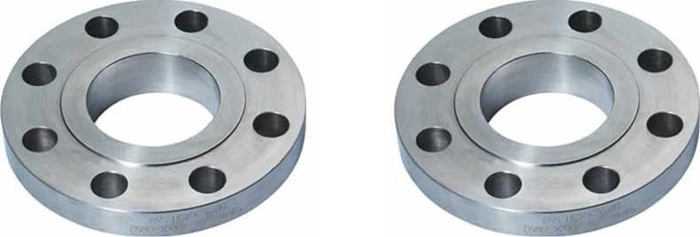Common Types of Pipeline Flange Faces
Flanges provide the necessary connections to link pipelines. Faces are the mating surface of a flange. Flange faces have to be smooth enough to ensure a tight, leak-free seal for bolted flanges. For the purpose of this article, we will be focusing on five common types of flange faces:
1. Raised Face (RF)
2. Flat Face (FF)
3. Ring-Type Joint (RTJ)
4. Male-and-Female (M&F)
5. Tongue-and-Groove (T&G)
Raised Face (RF)
The Raised Face type is the most applied flange type, and is easily to identify. It is called raised face because the gasket is raised 1/16" to 1/4" above the bolt circle face. This face type allows the use of a wide combination of gasket designs, including flat ring sheet types and metallic composites such as spiral wound and double jacketed types.
The purpose of a RF flange is to concentrate more pressure on a smaller gasket area and thereby increase the pressure containment capability of the joint.

Flat Face (FF)
The flat face (full face) flange has a gasket surface in the same plane as the bolting circle face. Applications using flat face flanges are frequently those in which the mating flange or flanged fitting is made from a casting.
Flat face flanges are never to be bolted to a raised face flange. When connecting flat face cast iron flanges to carbon steel flanges, the raised face on the carbon steel flange must be removed, and that a full face gasket is required. Flat face flanges are used on pump facings or on fiberglass flanges where the torque of compressing the gasket will damage the flange body and on cast iron flanges sometimes found on mechanical equipment that can cause complications due to the brittle nature of cast iron. Forged steel flat face flanges are often found 150# and 300# ratings.
The Flat Face flange has a gasket surface in the same plane as the bolting circle face. Applications using flat face flanges are frequently those in which the mating flange or flanged fitting is made from a casting.

Ring-Type Joint (RTJ)
The Ring Type Joint flanges are typically used in high pressure (Class 600 and higher rating) and high temperature services above 800°F (427°C).
RTJ flanges have grooves cut into their faces. An RTJ flange may have a raised face with a ring groove machined into it. This raised face does not serve as any part of the sealing means. For RTJ flanges that seal with ring gaskets, the raised faces of the connected and tightened flanges may contact each other. In this case the compressed gasket will not bear additional load beyond the bolt tension, vibration and movement cannot further crush the gasket and lessen the connecting tension.
Ring-type joints (RTJ) are considered to be the most efficient flanges for use in pipeline design. Rather than using a gasket between connecting flanges, RTJ have a deep groove in a ring shared around the face.
Ring type gaskets must be used on this type of flange. Ring Type Joint gaskets are metallic sealing rings, suitable for high-pressure and high-temperature applications.

Tongue-and-Groove (T&G)
With this type the flanges must be matched. One flange face has a raised ring (Tongue) machined onto the flange face while the mating flange has a matching depression (Groove) machined into it′s face. These facings are commonly found on pump covers and valve bonnets.
Tongue-and-groove facings are standardized in both large and small types. They differ from male-and-female in that the inside diameters of the tongue-and-groove do not extend into the flange base, thus retaining the gasket on its inner and outer diameter.
Tongue-and-groove joints also have an advantage in that they are self-aligning and act as a reservoir for the adhesive. The scarf joint keeps the axis of loading in line with the joint and does not require a major machining operation.

Male-and-Female (M&F)
This type of flanges also must be matched. One flange face has an area that extends beyond the normal flange face (Male). The other flange or mating flange has a matching depression (Female) machined into it′s face. Custom male and female facings are commonly found on the heat exchanger shell to channel and cover flanges. The female face and the male face are smooth finished. The outer diameter of the female face acts to locate and retain the gasket.
Advantages:
Better sealing properties, more precise location and exact compression of sealing material, utilization of other, more suitable sealing and specialized sealing material.
Disadvantages:
Normal raised faced is far more common and ready available both regarding Valves, flanges and sealing material. Another complexity is that some rigid rules must be applied to the piping design.

Related News
- High-pressure Wellhead Device Valve Body End Threaded Flanges
- Threaded Flanges at the End of Valve Bodies of High-pressure Oil & Gas Wellhead Devices
- Why Do Stainless Steel Flanges Crack?
- Analysis of Leakages of Steam Flange Sealing
- Leakages of Steam Flange Sealing
- Results of Stainless Steel 304 Flanges in Propylene
- Analyzing Failure of Stainless Steel 304 Flanges in Propylene
- The Forging Process of Stainless Steel Flanges
- Analysis of the Cause and Recommendations for Welding
- Measures to Prevent and Control Deformation Caused by Welding
